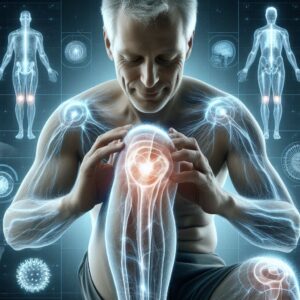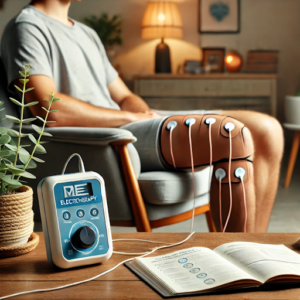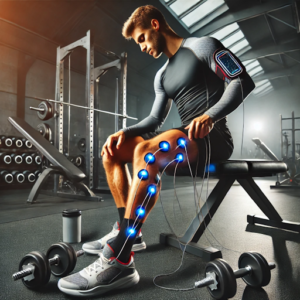Rejuvenate Your Body with Electrotherapy
Electrotherapy is a treatment approach that utilises electrical energy to activate bodily tissues, promoting healing and alleviating pain. This method has its roots in ancient practices, employing electrical fish for healing purposes, but it has significantly evolved due to technological advancements and improved medical understanding. It delivers controlled electrical signals to specific body areas, influencing the function of nerves and muscles.
The impulses can modulate pain signals, enhance blood circulation, and promote tissue repair by stimulating cellular activity. The core idea is that the body responds to electrical stimulation, improving recovery and fostering overall well-being. The mechanisms underlying electrotherapy are intricate and diverse.
Electrical currents applied to the skin can activate sensory nerves, which may lead to the release of endorphins—natural substances produced by the body that relieve pain. Additionally, electrotherapy can stimulate muscle contractions, which aids in muscle strengthening and is essential for preventing atrophy during periods of immobilisation. Additionally, the increased blood circulation stimulated by these electrical impulses enhances the delivery of oxygen and nutrients to injured tissues, thereby accelerating the healing process.
Summary
- Electrotherapy utilises electrical stimulation to promote healing and reduce pain in the body.
- Electrotherapy is an essential resource in physical rehabilitation and pain management. It significantly alleviates inflammation and improves muscle performance.
- Different devices, including TENS, EMS, and ultrasound, are designed for unique purposes that cater to specific conditions.
- Following safety guidelines is essential when using electrotherapy at home, and it is recommended that you seek advice from a healthcare professional for proper usage.
- Combining electrotherapy with wellness practices such as exercise, nutrition, and mindfulness can significantly improve overall health and well-being.
 The Benefits of Physical Rehabilitation and Pain Management
The Benefits of Physical Rehabilitation and Pain Management
Electrotherapy offers various benefits for individuals involved in physical rehabilitation or looking for efficient pain management solutions. A significant advantage is its ability to provide noninvasive pain relief. A considerable portion of patients choose electrotherapy over pharmacological treatments, primarily due to concerns about the side effects and dependency associated with pain medications.
By utilising electrical stimulation, individuals can effectively manage pain while steering clear of the risks associated with long-term medication use. This element provides substantial benefits for those managing chronic conditions such as arthritis or fibromyalgia, especially when traditional treatments fail to deliver sufficient relief. Moreover, electrotherapy enhances rehabilitation by promoting muscle strength and flexibility.
Maintaining muscle function is crucial for regaining mobility and attaining independence for individuals recovering from surgery or injury. Electrotherapy can be effectively integrated into rehabilitation programs to stimulate muscles that may be weak or inactive due to injury. This stimulation not only aids in muscle recovery but also improves overall physical performance.
Moreover, the psychological benefits of reduced pain and increased mobility are substantial; individuals often report that their mood and motivation elevate when they observe tangible progress in their rehabilitation journey.
Different Types of Electrotherapy Devices and Their Uses
The transcutaneous electrical nerve stimulation (TENS) unit is one of the most commonly used devices. It provides low-voltage electrical currents through electrodes placed on the skin. TENS units are primarily employed to relieve pain, resulting in their extensive adoption by individuals suffering from chronic pain or those undergoing recovery after surgery.
TENS units provide exceptional flexibility, allowing users to tailor settings to their preferred comfort levels, making them suitable for home and clinical environments. The electrical muscle stimulation (EMS) unit is an impressive device that stimulates muscle contractions rather than nerve endings. EMS provides considerable benefits for athletes and individuals in rehabilitation by effectively building muscle strength and improving endurance, all while reducing joint stress.
Additionally, sophisticated techniques such as interferential current therapy (IFC) and neuromuscular electrical stimulation (NMES) utilise different frequencies and waveforms to address particular tissues precisely. Each device serves a unique purpose in electrotherapy, allowing practitioners to tailor treatments to meet individual needs and conditions.
 How to Safely Use Electrotherapy at Home
How to Safely Use Electrotherapy at Home
Electrotherapy in a home setting can be an effective method for pain management and rehabilitation. Nevertheless, it is essential to engage in this practice with caution and a well-informed perspective. Prior to starting any regimen, individuals should consult with a healthcare professional to ensure its appropriateness for their specific condition. An experienced expert can help select the suitable device, understand its features, and configure the optimal settings for effective treatment.
The initial consultation is crucial in preventing potential misuse or complications arising from improper application. Once users have acquired the suitable device and grasped its functionality, adhering to safety protocols when using electrotherapy in a home environment is essential. Following the manufacturer's recommendations regarding electrode placement, usage duration, and intensity settings is crucial.
To avoid discomfort or skin irritation, users should start with lower intensity levels and gradually increase them as they adapt. Additionally, it is crucial to observe the skin for any adverse reactions during the treatment sessions. It is recommended that individuals discontinue use immediately and seek advice from a medical professional if they experience any unusual symptoms, such as notable redness, swelling, or persistent pain.
Individuals can maximise benefits by prioritising safety and adhering to proven best practices while minimising potential risks.
Combining Electrotherapy with Other Wellness Practices for Optimal Health
Integrating electrotherapy with diverse wellness practices creates a holistic strategy for health, encouraging improved overall well-being. Integrating physical therapy can significantly improve recovery outcomes. Electrotherapy provides pain relief and muscle stimulation, while physical therapy focuses on movement patterns and functional exercises.
Integrating these modalities allows for a comprehensive rehabilitation program that effectively addresses symptoms while promoting lasting physical well-being. Incorporating mindfulness practices such as yoga or meditation can enhance its benefits. Implementing mindfulness techniques can significantly reduce stress and improve mental clarity, providing valuable advantages for individuals dealing with chronic pain or recovering from injury.
Creating a positive mental environment can encourage patients to be more receptive to physical therapies like electrotherapy. This comprehensive approach addresses physical challenges while cultivating emotional resilience, leading to a more balanced and fulfilling life.
 Electrotherapy for Athletes: Enhancing Performance and Recovery
Electrotherapy for Athletes: Enhancing Performance and Recovery
For athletes striving for peak performance, electrotherapy has emerged as a vital tool in training and recovery. Electrical stimulation effectively improves muscle conditioning by mimicking natural contractions during exercise routines. This method allows athletes to focus on specific muscle groups while reducing the risk of injury often associated with traditional training methods.
As a result, athletes can maintain their fitness levels, even during periods of rest or recovery from injuries. In addition to enhancing performance, electrotherapy plays a crucial role in recovery after exercise or competition. Devices such as TENS units and EMS effectively reduce muscle soreness and enhance recovery times. These methods enhance blood circulation and reduce inflammation in tired muscles.
Athletes often report feeling rejuvenated after electrotherapy sessions, allowing them to return to training with increased speed and efficiency. The continuous progress in sports science suggests that integrating electrotherapy into athletic training programs will become increasingly popular, offering athletes a unique edge while prioritising their health and safety.
The Future of Electrotherapy: Innovations and Advancements in the Field
Promising opportunities are emerging for electrotherapy as continuous research uncovers groundbreaking applications and advancements in this vibrant sector. Innovative advancements such as wearable devices are on the horizon, allowing users to integrate treatment into their daily lives seamlessly. These devices have the potential to provide real-time insights into muscle activity and pain levels, enabling personalised treatment plans that adapt based on individual responses.
Recent advancements hold the promise of revolutionising how patients manage their conditions at home while maintaining an active lifestyle. Furthermore, ongoing research into the mechanisms may lead to enhanced insights and improved methods for addressing various medical conditions. As researchers explore the intricacies of electrical stimulation's effects on cellular processes, new protocols may emerge to enhance treatment outcomes for specific situations.
Combining electrotherapy and innovative technologies such as artificial intelligence is set to create sophisticated treatment options tailored to individual needs. Electrotherapy is poised for continuous advancement, offering promising opportunities to enhance health and well-being across diverse populations.
For those seeking to grasp the benefits, a comprehensive overview is available on MCR Therapies' services page, emphasising how this treatment can assist in pain relief and muscle stimulation. Electrotherapy is one of the many specialised services offered. For additional details on how electrotherapy can be tailored to meet your health needs, we invite you to explore MCR Therapies Services. This resource is essential for anyone seeking to improve their well-being through expert therapeutic interventions.
FAQs
Electrotherapy, what is it?
Electrotherapy is a kind of electrical stimulation that may be used to treat various medical conditions by stimulating specific nerves and muscles. It has the potential to alleviate aches and pains, build muscle, and speed recovery.
Electrotherapy: how does it work?
Electrodes on the skin deliver electrical impulses to the body as part of electrotherapy. These impulses can suppress pain signals, increase endorphin synthesis, and improve circulation.
Could electrotherapy help treat the following issues?
Chronic pain, weak muscles, sports injuries, and neurological abnormalities are just some of the many conditions that electrotherapy may alleviate. It can also help in recovery after an injury or surgery.
Does electrotherapy come in a variety of forms?
Microcurrent treatment, interferential therapy, transcutaneous electrical nerve stimulation (TENS), and electrical muscle stimulation (EMS) are all examples of electrotherapy. Different kinds have different uses and benefits.
How safe is electrotherapy?
Electrotherapy is generally safe in the hands of trained professionals. However, people with pacemakers who are pregnant or who have other serious medical conditions may not be good candidates. Consult your doctor before beginning electrotherapy.
Brought To You By: Electrotherapy Preston
The Article: Revitalise Your Body with Electrotherapy appeared first on Preston Electrotherapy
The Article Get Your Body Revitalised with Electrotherapy appeared first on https://mcrtherapies.com
The Article Get Your Body Revitalised with Electrotherapy Was Found On https://limitsofstrategy.com



Comments are closed